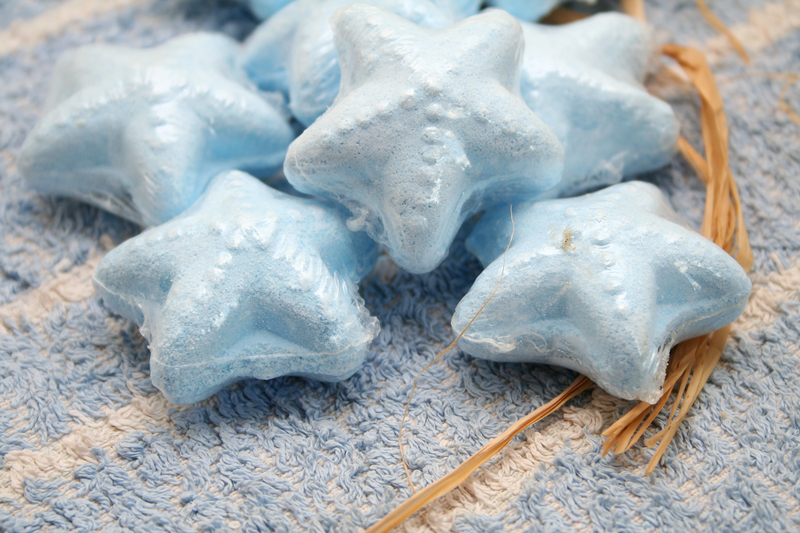Revitalize Your Pieces with Top Jewellery Cleaning Tips
Posted on 21/08/2025
Revitalize Your Pieces with Top Jewellery Cleaning Tips
Jewellery goes beyond mere accessories -- each piece tells a story, represents a memory, or signifies a cherished relationship. Over time, however, your favorite rings, necklaces, bracelets, and earrings may lose their luster, accumulate grime, or become tarnished. To keep your jewelry collection sparkling and preserve its longevity, implementing effective jewellery cleaning techniques is essential. In this comprehensive guide, you'll discover the best ways to clean jewelry, expert care advice, product recommendations, and much more!

Understanding Why Jewellery Gets Dirty and Tarnished
Before diving into cleaning methods, it's vital to understand why jewellery loses its shine in the first place. Here are the common culprits:
- Everyday Wear: Skin oils, sweat, lotions, perfumes, and household chemicals build up on jewelry.
- Environmental Factors: Air pollution and humidity can affect metal surfaces and gemstones.
- Improper Storage: Tangling, rubbing against harder items, and exposure to air all hasten tarnish.
- Natural Tarnishing: Metals like silver react naturally with the air, leading to oxidation and loss of shine.
Recognizing these causes helps you choose the right cleaning methods for jewelry restoration and prevention.
General Guidelines for Safe Jewellery Cleaning
- Check Jewellery Settings: Ensure that stones or delicate pieces are secure before cleaning to avoid accidental loss or damage.
- Avoid Harsh Chemicals: Chemicals such as bleach, acetone, and ammonia can severely damage many metals and gemstone surfaces.
- Test on a Small Area: Before full cleaning, try your method on an inconspicuous spot to ensure compatibility.
- Use the Right Tools: Soft bristle toothbrushes, lint-free cloths, and specialized cleaning solutions are best for the job.
- Rinse Thoroughly: Always remove any residue after cleaning, especially in crevices where build-up can occur.
Step-by-Step Jewellery Cleaning Tips by Material
How to Clean Silver Jewellery
Silver jewelry is prone to tarnishing, but it is surprisingly easy to revitalize your pieces with the right approach:
- Soak items in a mixture of warm water and mild dish soap for 5-10 minutes.
- Use a soft toothbrush to gently remove dirt and tarnish, especially in engraved or detailed areas.
- For stubborn tarnish, make a paste of baking soda and water, gently rub onto the piece, then rinse.
- Dry with a microfiber or jewelry polishing cloth to restore shine.
How to Clean Gold Jewellery
Gold pieces are less likely to tarnish but can lose their shine due to oil and dirt:
- Dilute a few drops of mild detergent in lukewarm water.
- Soak the jewelry for 10-15 minutes, then gently scrub with a soft brush.
- Rinse thoroughly under running water, then pat dry with a soft, lint-free cloth.
Avoid abrasive cleaners or brushes as these can scratch the metal's surface.
How to Clean Gemstone Jewellery
Different gemstones have varying sensitivities. Here's how to clean them safely:
- Diamonds: Warm water and mild soap are safe. Use a soft toothbrush and gently scrub the stone and setting.
- Sapphires, Rubies: Clean similarly to diamonds, but avoid harsh chemicals.
- Opals, Pearls, Emeralds: These are porous and delicate. Wipe with a damp, soft cloth rather than soaking. Never use ultrasonic cleaners.
Tip: For pearl and opal necklaces, lay them flat to dry to prevent restringing issues.
How to Clean Costume and Fashion Jewellery
Costume jewellery often uses glued settings or plated metals that require extra care:
- Lightly dampen a soft cloth with water and mild soap. Avoid soaking entirely.
- Pat dry immediately to prevent water damage.
- Never use ultrasonic or steam cleaners as these can dissolve glue and loosen stones.
Top Jewellery Cleaning Products and Tools
Recommended Jewellery Cleaning Solutions
- Commercial Jewelry Cleaners: These are convenient and formulated for different metals and gemstones. Always check compatibility before use.
- Jewelry Polishing Cloths: Dupont or Sunshine Cloths are designed for safe tarnish removal, especially effective for silver and gold.
- Ultrasonic Cleaners: These use sound waves to dislodge dirt and debris, ideal for diamonds, sapphires, and solid gold (never for pearls, opals, or glued pieces).
Homemade Jewellery Cleaning Solutions
- Baking Soda Paste: Gently cleans tarnished silver and does not leave scratches when applied with a soft cloth.
- Vinegar and Baking Soda: For stubborn silver tarnish, submerge in a mix of 1/2 cup white vinegar and 2 tablespoons baking soda for 2-3 hours, then rinse and dry.
- Ammonia Solution: Rarely needed, but a ratio of 1 part ammonia to 6 parts water can restore diamond sparkle. Strictly avoid for pearls, gemstones, and costume jewelry.
Daily Care to Keep Your Jewellery Shining
Preventative maintenance is just as important as regular cleaning. Incorporate these daily habits:
- Remove jewellery before showering, swimming, or exercising to prevent exposure to water, sweat, and chemicals.
- Apply lotions, perfume, and hairspray before putting on your pieces. Let the products dry fully to avoid residue buildup.
- Wipe jewelry with a clean, dry cloth after each wear to remove oils and sweat.
- Store each piece separately in a lined box or pouch to prevent scratches and tangling.
- Schedule professional cleanings for precious heirlooms or valuable items at least once a year.
Common Jewellery Cleaning Mistakes to Avoid
- Over-cleaning: Excessive or aggressive cleaning wears down metals and settings over time. Clean only as needed.
- Using abrasive cleaners or brushes: Never use toothpaste, baking soda directly on soft gemstones, or anything metal or stiff-bristled.
- Submerging porous or glued items: Water can weaken adhesives and permanently damage pieces with soft stones.
- Exposing to heat: Boiling, steaming, or using hot water can crack certain stones or warp settings.
- Skipping inspection: Cleaning loose stones or insecure prongs can lead to lost gems. Inspect before you clean.
Special Tips for Revitalizing and Restoring Old or Tarnished Jewellery
Sometimes treasured pieces need more than routine cleaning. Here's what you can do to restore vintage or heavily tarnished jewelry:
- For sentimental or valuable jewelry, consult a professional for restoration. This preserves the piece's structure, especially if it features old settings or fragile stones.
- For silver, try the aluminum foil and baking soda method:
- Line a bowl with aluminum foil, add 1 tablespoon baking soda and 1 tablespoon salt, and pour in hot water.
- Place the jewelry in the solution to touch the foil. Wait 2-5 minutes as tarnish transfers from the silver to the foil.
- Rinse and dry thoroughly. This method removes deep tarnish but should not be overused.
- Hand-polish with a specialized silver or gold cloth for intricate patterns or engraved details.
When to Seek Professional Jewellery Cleaning Services
While home cleaning restores most modern jewelry pieces, some situations call for an expert:
- Antique or Vintage Pieces: Old solder, settings, or fragile gems may need special handling.
- Watches and Timepieces: Internal mechanisms require specialized cleaning and care.
- Jewelry with Damage: Bent prongs, loose stones, or deep scratches should be addressed by a jeweler.
- Complex Gem Arrangements: Let a professional handle cluster or pave designs where dirt builds up but settings are hard to access.
Professional polishing and ultrasonic cleaning services can restore even the dullest piece, ensuring it remains a showstopper for years to come.

FAQs: The Best Jewellery Cleaning Tips Answered
How often should I clean my jewellery?
It depends on how frequently you wear it. For daily-wear pieces like engagement rings, weekly cleaning is ideal, while special occasion pieces only need attention every 1-2 months.
Is ultrasonic cleaning safe for all jewelry?
No. Ultrasonic cleaners are safe for diamonds, sapphires, rubies, and solid gold, but not for pearls, opals, emeralds, or glued costume jewelry.
Can I use toothpaste to clean jewelry?
Toothpaste contains abrasives that can scratch metals and gemstones. Always use a non-abrasive cleaner specifically formulated for jewelry.
What's the best way to store jewelry to prevent tarnishing?
Store each piece separately in anti-tarnish pouches or lined boxes, away from humidity. Consider using silica gel packs in your jewelry box to absorb moisture.
Conclusion: Keep Your Jewellery Thriving with Simple Cleaning Techniques
Jewellery is meant to be worn, enjoyed, and admired -- not tucked away because of tarnish or lost shine. With these jewellery cleaning tips and best practices, you can effortlessly restore the sparkle and brilliance of your treasured pieces at home. By understanding each material's needs, using safe products, and committing to consistent care, your rings, necklaces, bracelets, and earrings will look radiant for generations.
Start a regular jewelry cleaning routine today and let your collection shine as brightly as the memories it represents!





